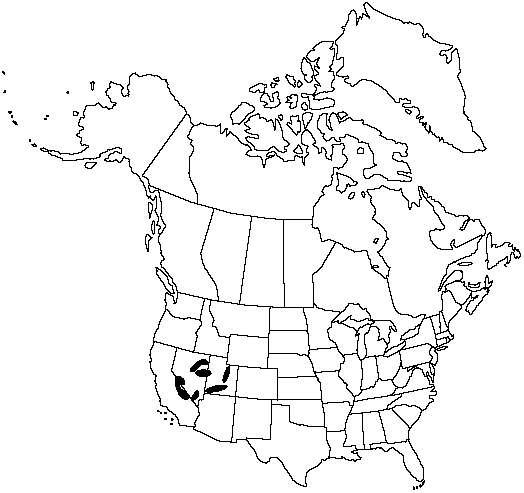Pinus longaeva
Ann. Missouri Bot. Gard. 57: 243. 1970.
Trees to 16m; trunk to 2m diam., strongly tapering; crown rounded, flattened (sheared), or irregular. Bark redbrown, shallowly to deeply fissured with thick, scaly, irregular, blocky ridges. Branches contorted, pendent; twigs pale redbrown, aging gray to yellow-gray, puberulent, young branches resembling long bottlebrushes because of persistent leaves. Buds ovoid-acuminate, pale redbrown, ca. 1cm, resinous. Leaves mostly 5 per fascicle, upcurved, persisting 10–30 years, 1.5–3.5cm × 0.8–1.2mm, mostly connivent, deep yellow-green, with few resin splotches but often scurfy with pale scales, abaxial surface without median groove but with 2 subepidermal but evident resin bands, adaxial surfaces conspicuously whitened with stomates, margins entire or remotely and finely serrulate distally, apex bluntly acute to short-acuminate; sheath ca. 1cm, soon forming rosette, shed early. Pollen cones cylindro-ellipsoid, 7–10mm, purple-red. Seed-cones maturing in 2 years, shedding seeds and falling soon thereafter, spreading, symmetric, lance-cylindric with rounded base before opening, lance-cylindric to narrowly ovoid when open, 6–9.5cm, purple, aging redbrown, nearly sessile; apophyses much thickened, sharply keeled; umbo central, raised on low buttress, truncate to umbilicate, abruptly narrowed to slender but stiff, variable prickle 1–6mm, resin exudate pale. Seeds ellipsoid-obovoid; body 5–8mm, pale-brown, mottled with dark red; wing 10–12mm.
Habitat: Subalpine and alpine
Elevation: 1700–3400m
Distribution

Calif., Nev., Utah.
Discussion
Pinus longaeva is considered by dendrochronologists to be the longest-lived tree. One tree was estimated to be 5000 years old.
Selected References
None.
Lower Taxa
"relatively thin" is not a number.